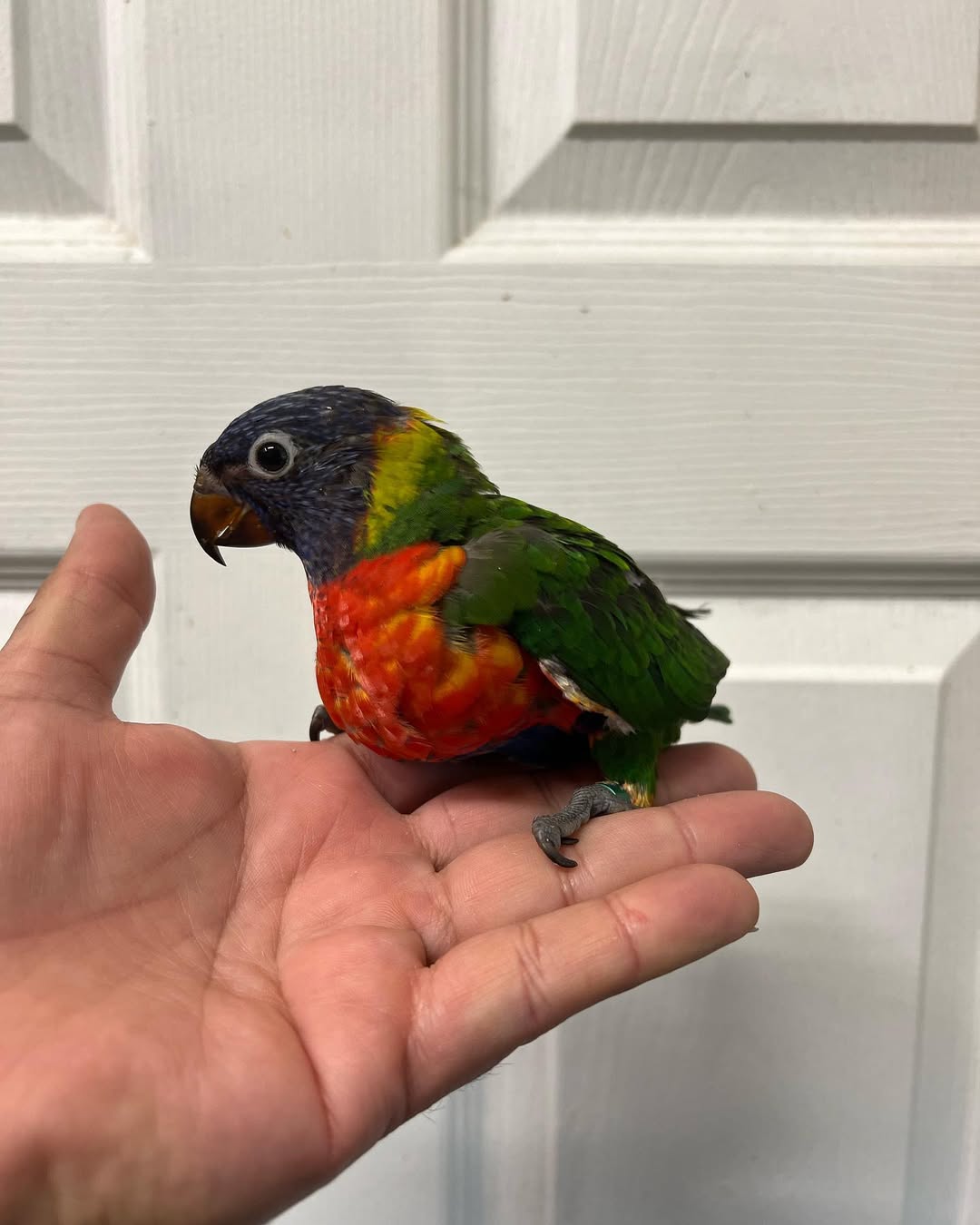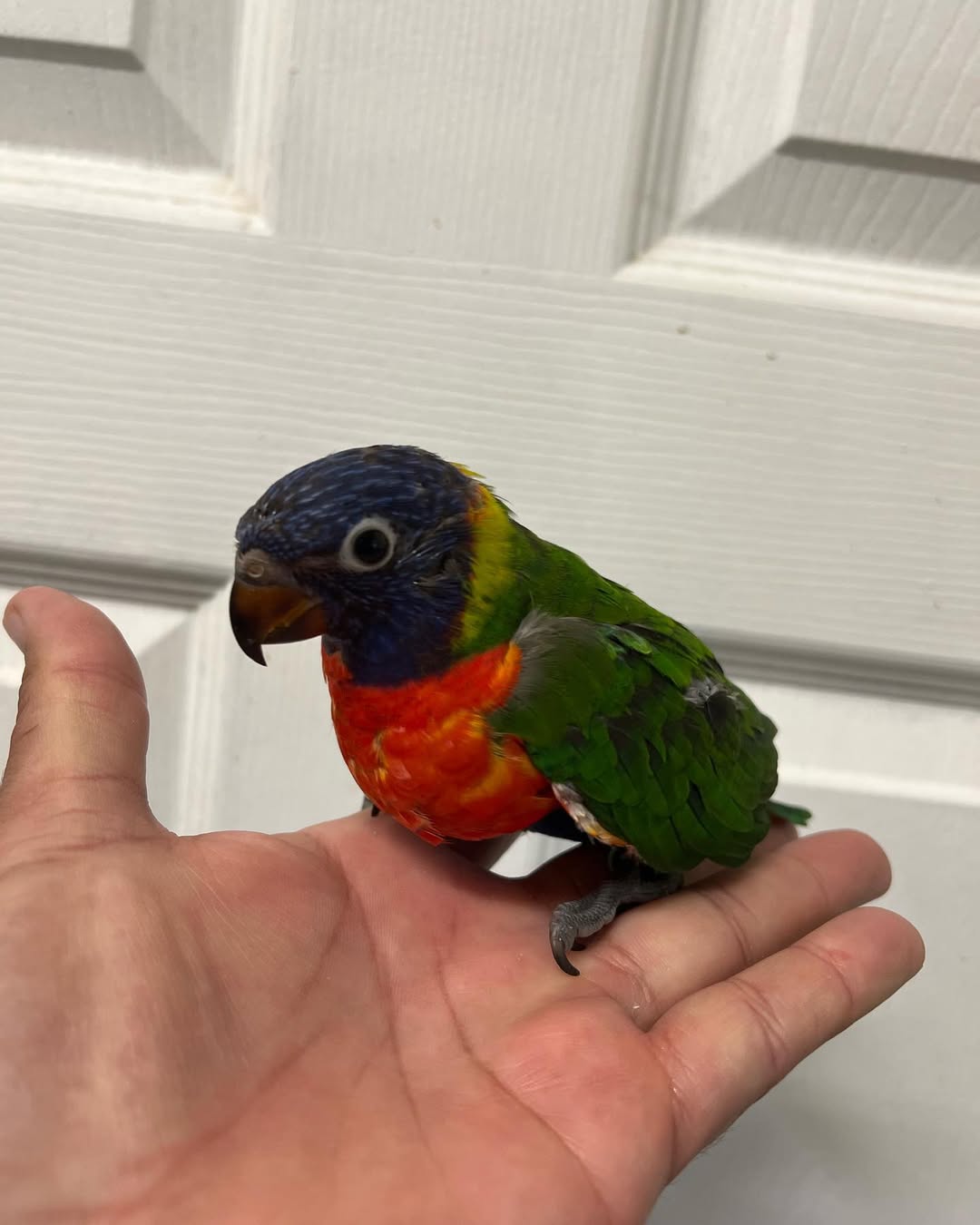Description
Baby Lorikeet for Sale – Adorable 2-Month-Old, Playful, and Full of Color
Looking for a bright, playful, and loving feathered companion? Meet our 2-month-old baby Lorikeet, a tiny bundle of joy ready to bring vibrant energy into your life. With its dazzling rainbow-colored plumage and bubbly personality, this young parrot is sure to brighten your home and heart. Hand-raised with love, this baby Lorikeet is tame, social, and eager to bond with its forever family.
Why Choose a Baby Lorikeet?
Lorikeets are known for their striking rainbow feathers, playful nature, and endless curiosity. They’re small yet bursting with personality, making them perfect for bird lovers who want an active and interactive pet. Lorikeets thrive on attention and love to engage with toys, puzzles, and their human companions.
This baby Lorikeet is at the perfect age to begin bonding and training. They are known for their vocalizations, mimicking sounds, and chirping to communicate their happiness. Their inquisitive and affectionate nature makes them a joy to have as a pet.
Caring for Your Baby Lorikeet
Lorikeets are unique in that their diet primarily consists of nectar, pollen, and fresh fruits. You can provide specialized Lorikeet nectar mixes and supplement them with juicy fruits like apples, pears, grapes, and melons. Always provide fresh water and avoid feeding them seeds, as they are not suitable for a Lorikeet’s digestive system.
Ensure their cage is spacious and filled with fun toys, ladders, and swings to keep them entertained. These birds are highly energetic and require daily out-of-cage time to stretch their wings, play, and interact with you. Lorikeets also enjoy bathing, so offer a shallow dish of water or gently mist them for a fun and refreshing activity.
What Makes This Baby Lorikeet Special?
This 2-month-old Lorikeet is not just a pretty face—it’s full of life and personality. Hand-raised and socialized, this little bird is comfortable around people and loves to engage with its environment. With proper care, Lorikeets can live up to 15-20 years, providing you with years of love, laughter, and companionship.
Do lorikeets speak?
Yes, many lorikeets can talk, and some species are known for being excellent talkers:
-
Rainbow lorikeets
These birds are known for being very talkative and can learn to say many words and phrases. They are noisy birds with a high-pitched tone and frequent squawks.
-
Hand-reared lorikeets
Both male and female hand-reared lorikeets can be trained to talk. However, they require a lot of attention and daily handling, otherwise they may lose their willingness to be held or sit with their owner.
What do baby lorikeets eat?
Baby lorikeets primarily eat a specially formulated “wet mix” that closely resembles nectar, which is their primary food source in the wild; this mix is typically purchased from pet stores and should be fed with a syringe or spoon, and can be supplemented with small amounts of finely pureed fruits like apples, pears, and berries as they begin to wean.
-
Wet mix:
This is the staple food for baby lorikeets, consisting of a liquid mixture designed to mimic the nectar they would eat in the wild.
-
Fruit purees:
Once they start weaning, small amounts of finely pureed fruits like apples, pears, berries, and papaya can be introduced.
-
Vitamin supplements:
Adding a vitamin supplement to the water is often recommended.
-
Avoid whole fruits:
Do not feed whole fruits to very young lorikeets as they may not be able to digest them properly.
- Consult a veterinarian: Always consult with an avian veterinarian before feeding any new food to your baby lorikeet to ensure it is appropriate for their age and health.
- Feeding frequency: Baby lorikeets need to be fed frequently, especially when very young.
- Proper hygiene: Keep feeding utensils clean to prevent the spread of bacteria.
What does a female lorikeet look like?
Female lorikeets look similar to male lorikeets, and it’s often difficult to tell them apart just by their appearance. Both male and female lorikeets have the following features:
- Color: Bright red beak, blue head and belly, green wings, tail, and back, and an orange/yellow breast
- Size: Males are slightly larger than females, but the difference is small
- Behavior: They are often seen in loud and fast-moving flocks, or in communal roosts at dusk
- Diet: They eat mostly nectar and pollen, but also fruits, seeds, and insects
To determine the sex of a lorikeet, you can have a vet surgically sex it or analyze a feather using DNA.
Ready to Add a Splash of Color to Your Life?
Don’t miss the chance to welcome this baby Lorikeet into your home. Their colorful plumage, playful antics, and affectionate nature make them a perfect companion for individuals and families alike. Learn more about Lorikeet care and how to create a happy environment for your new pet here.








